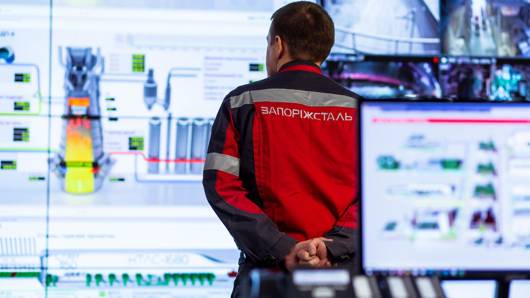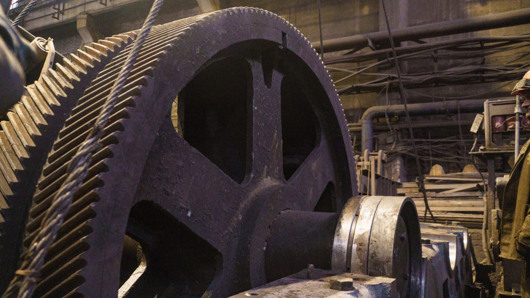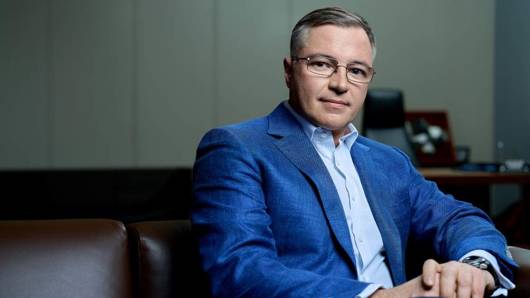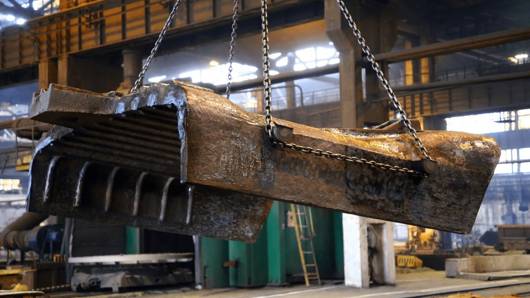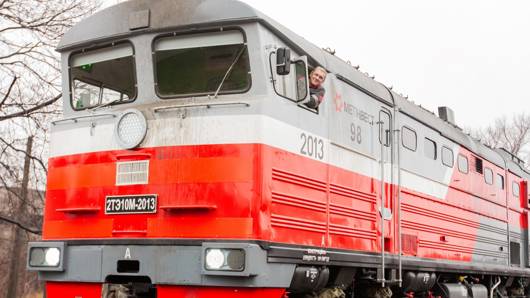Oleksandr Mironenko, Chief Operating Officer of Metinvest Group, in an interview with Pryamiy channel described the support provided to defenders as part of Rinat Akhmetov's Steel Front military initiative during three years of full-scale war, the best steel production developments for the army, and plans for 2025.
We are meeting with you on the threshold of the fourth year of the full-scale invasion – years of major war, years of cooperation between you and your company as Steel Front with the Defence Forces." Please recall how it all began.
Actually, the war for us started back in 2014, and we provided significant support to the Defence Forces. However, at that time, it was mainly about supplying purchased items. With the onset of the full-scale invasion in Ukraine, the support has increased dramatically and was divided into two directions. The first focuses on what we can systematically purchase and deliver to the military. The second focuses on what we can produce at our own production sites.
For us, it is especially important that this assistance is not a one-off – meaning we deliver it, forget about it, and don't engage any more – but systematic, consistent, and long-term. We have been working with the Defence Forces for years now, providing the necessary support.
How did Steel Front come about? What does this combination of words mean for you as a company?
Look, in a way, Steel Front is a combination of all the businesses that are part of SCM Group. All businesses are involved in helping the Defence Forces. This is a specific brand – "Steel".
Why specifically "Steel"?
Because the main product we produce is steel. It symbolises strength: the strength of Ukraine, the strength of the Ukrainian people, the strength of our company. That is why we chose this particular brand under which we provide aid to the army.
Steel symbolises strength: the strength of Ukraine, the strength of the Ukrainian people, the strength of our company.
Looking back three years ago, what was the main and most sensitive need, judging by the requests from the Defence Forces of Ukraine?
If we are talking about our own production, the first year was, let's say, getting acquainted with the Defence Forces. If I may say so, we were just trying to find out what they needed. Because when the large-scale mobilisation began, quite a lot of people were joining the military, and there was not even enough armoured steel to complete bulletproof vests.
I remember the first weeks of the war when brigade commanders would call and say: 'We just received 2,000–3,000, they only have plate carriers, T-shirts, and nothing else.' We looked at how we could help, organized production, and effectively covered all the demand that came to us for armour plates. We assembled over 30,000 or 40,000 bulletproof vests – which is actually 80,000 plates that we provided free of charge. They saved the lives of our soldiers. [In total, Metinvest manufactured 150,000 bulletproof vests for the military, rescue teams, medics, and utility workers - ed.]
The second direction was also the urgent need for reconnaissance, surveillance, and communication equipment, because there was a severe shortage of everything, especially in the initial period of the war.
Since we have an extensive network of procurement services that support our production, we started purchasing everything necessary through them – from drones to collimator sights – to equip our troops so they could become combat-ready faster and effectively resist the enemy.
I remember the first weeks of the war when brigade commanders would call and say: 'We just received 2,000–3,000, they only have plate carriers, T-shirts, and nothing else.'
How did this range of products change over time? If we look back from 2025, how has the production for the army changed?
If we talk about the retrospective:
◾ 2022 was about armoured steel, mobile shelters ('kryivka') and 'Lancet catchers' that provided stationary protection for our equipment.
◾ In 2023, we developed command modules based on our 'kryivka' and began installing them for the Defence Forces. We also modified our shelters that protect equipment from 'Lancets' and began producing anti-drone screens.
◾ 2024 was about increasing production volumes of our main products, such as 'kryivka' and 'Lancet catchers.' They are modified depending on how the enemy's weapons systems change. Now it is not just 'Lancets' but also FPV drones, so different protection configurations are needed for the equipment. We have mastered the entire spectrum of protection for all types of equipment in the Defence Forces: Abrams, Leopards, T-64, T-72, BMPs, Bradleys, Kozaks – all of these are now equipped with our protective systems.
We also began producing anti-mine trawls for tanks, which help them cross minefields without damage to the crew.
However, the most important project of 2024, in my opinion, is the underground field hospital.
Is this the hospital based on "kryivka"?
Yes. It is a fully protected underground hospital equipped with surgical rooms, recovery rooms, and first aid facilities. In total, it is 500 m2 underground, completely built by our company.
Do you have plans to build one or more hospitals like this?
Yes, we plan to build several hospitals this year. But after consulting with medical professionals, we are transitioning from large hospitals (serving 3-4 brigades) to brigade and battalion-level hospitals that will be closer to the front line to provide even more effective assistance.
You also mentioned the protective screens for armoured vehicles, especially Abrams and Bradleys. What is the fundamental difference between these and the grids known as 'mangals'?
The enemy simply welds a grid on top, and that is it. In our case, it is comprehensive protection covering the entire vehicle: the engine compartment, the running gear, and the turret where the soldiers are located. It increases the vehicle's durability by 25-30%.
And finally, what are your plans for 2025?
Our focus remains the same: fortifications, vehicle protection, air defence equipment, and anti-mine trawls.






